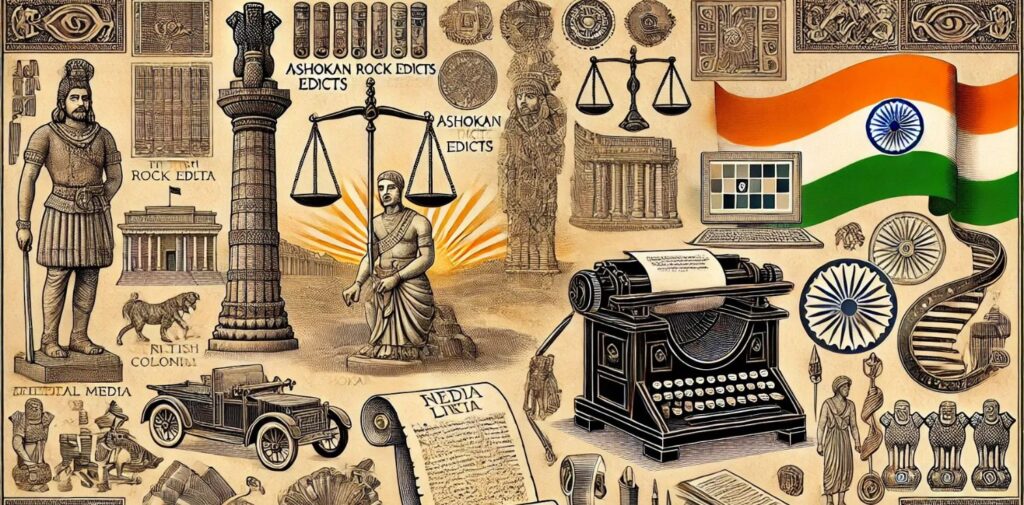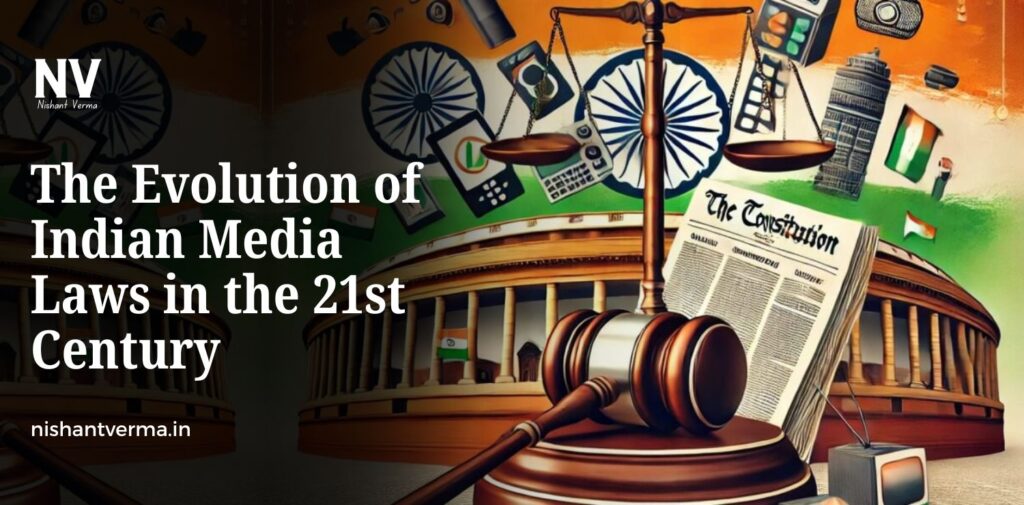The Indian media landscape has undergone a significant transformation in the 21st century, influenced by technological advancements, changing social dynamics, and evolving political scenarios. The laws governing media in India have had to adapt to these changes, balancing freedom of expression with the need for regulation. In this article, we will explore the Evolution of Indian Media Laws, highlighting key developments, challenges, and the way forward.
The Early Media Laws in India
Before diving into the 21st century, it’s important to understand the foundation of media laws in India. The Indian media was initially governed by laws that were laid out during the British colonial period. Some of the key laws included the Press Act of 1835, which aimed at controlling the press and limiting freedom of expression. After India gained independence in 1947, the country adopted a democratic constitution, which guaranteed freedom of speech and expression under Article 19(1)(a). However, this freedom was not absolute and was subject to reasonable restrictions under Article 19(2), particularly in the interest of national security, public order, and decency.
Post-independence, the media was mostly regulated through the Press Council of India Act (1978), which aimed to maintain the ethical standards of journalism, and the Cable Television Networks (Regulation) Act (1995), which aimed to regulate television broadcasts. However, the rapid growth of digital media and the explosion of online platforms in the 21st century created new challenges that required updated legal frameworks.

The Role of Technology in Shaping Media Laws
The beginning of the 21st century saw rapid technological advancements that changed how information was disseminated. The internet and mobile phones revolutionized the way people consumed news and entertainment. Traditional media like newspapers, radio, and television faced new competitors from digital platforms such as social media, news websites, and streaming services.
With the rise of digital media, India witnessed the emergence of new challenges in regulating content. While traditional media had clear regulations in place, the internet and social media platforms often operated in a grey area. In response to these changes, the Indian government introduced several new laws and regulations to control the spread of digital content and ensure that online platforms adhered to certain ethical standards.

The Information Technology (Intermediary Guidelines) Rules, 2021
One of the most important developments in the evolution of media laws in India was the introduction of the Information Technology (Intermediary Guidelines) Rules, 2021. These rules aimed to regulate social media platforms, messaging apps, and digital news media. They were designed to ensure that digital platforms complied with Indian laws and helped curb the spread of harmful or false content.
Under these rules, social media platforms were required to appoint grievance officers, ensure the traceability of certain types of content, and remove illegal or offensive content within a stipulated time. The rules also mandated that digital news publishers follow a code of ethics and a self-regulatory mechanism, which was a significant step toward improving the accountability of online media.
While these rules were hailed by some as necessary to ensure accountability, they also faced criticism for potentially infringing on freedom of expression. Critics argued that these regulations could lead to over-censorship and restrict the free flow of information. Nevertheless, these guidelines marked a significant shift in how media laws had to adapt to the digital age.
The Broadcast Media and the Need for Regulation
Alongside digital media, traditional broadcast media has also witnessed significant changes in the 21st century. The deregulation of the television industry in the 1990s led to an explosion of private channels, while the 2000s saw the introduction of satellite television, which made it easier for channels to reach remote areas of the country.
The government continued to regulate the broadcast sector through the Cable Television Networks (Regulation) Act, which was amended several times over the years. The most recent amendment came in 2015 when the government sought to control content related to news and current affairs broadcast by private television channels. The regulation aimed to maintain ethical standards and prevent the dissemination of content that could cause social unrest or violate national interests.
Additionally, in 2018, the Telecom Regulatory Authority of India (TRAI) introduced a new framework for pricing channels and regulating the content shown on television. These regulations aimed to provide transparency in subscription pricing and ensure that viewers had more control over their television subscriptions. However, despite these measures, there were ongoing concerns regarding the sensationalization of news, the spread of fake news, and the lack of self-regulation among news broadcasters.
Social Media and the Issue of Fake News
The 21st century has also seen the rise of social media platforms like Facebook, Twitter, WhatsApp, and Instagram. These platforms have become the primary source of news for millions of Indians, especially younger generations. However, with the rapid spread of information comes the challenge of fake news and misinformation. Social media platforms have often been criticized for allowing the spread of false or misleading content, which has led to violence, public panic, and even political unrest.
The Indian government has taken several steps to combat fake news, including the introduction of the Information Technology (Intermediary Guidelines) Rules, 2021, mentioned earlier. However, combating fake news on social media has proven to be a complex challenge due to the sheer volume of content and the difficulty in distinguishing between truth and falsehood. There have been calls for more stringent regulations, but there are also concerns about limiting freedom of expression and the role of technology companies in controlling content.

Challenges and the Way Forward
As India moves further into the 21st century, the evolution of media laws will continue to be shaped by technological advances and changing societal needs. There are several key challenges that need to be addressed to ensure that the media remains free, fair, and responsible.
One of the biggest challenges is finding the right balance between freedom of expression and the need for regulation. While it is important to prevent the spread of harmful or offensive content, it is equally important to ensure that these regulations do not infringe on the fundamental right to free speech. Striking this balance will require constant dialogue between the government, media organizations, and civil society.
Another challenge is ensuring that media laws keep up with the rapid pace of technological change. With the rise of new technologies like artificial intelligence, virtual reality, and augmented reality, there will be new challenges in regulating content that could potentially impact public opinion or national security. The legal framework must be flexible enough to adapt to these changes without stifling innovation or creativity.
Finally, there is a need for more effective self-regulation within the media industry. While the government can create laws and regulations, it is ultimately the responsibility of media organizations to uphold ethical standards and ensure that the content they produce is responsible and accurate. Encouraging media literacy among the public will also play a crucial role in ensuring that individuals can critically analyze the information they consume.
Conclusion: Evolution of Indian Media Laws
The evolution of media laws in India in the 21st century reflects the changing nature of the media landscape. From print and broadcast media to the rise of digital platforms and social media, the legal framework has had to adapt to keep pace with new challenges. While there have been significant steps taken to regulate content and curb fake news, there is still much work to be done to ensure that media laws strike the right balance between freedom of expression and regulation.
As India continues to embrace digital technologies, it is crucial that media laws evolve to protect the rights of citizens while maintaining the integrity and credibility of the media. The way forward lies in continuous dialogue, effective self-regulation, and an inclusive approach that allows for both innovation and accountability in the media industry.



